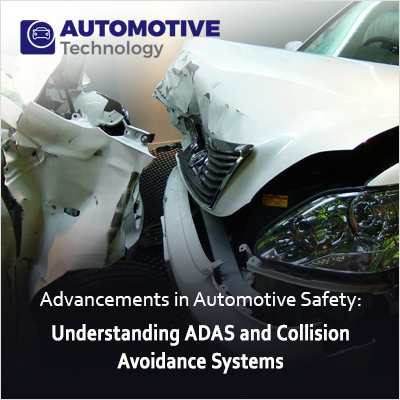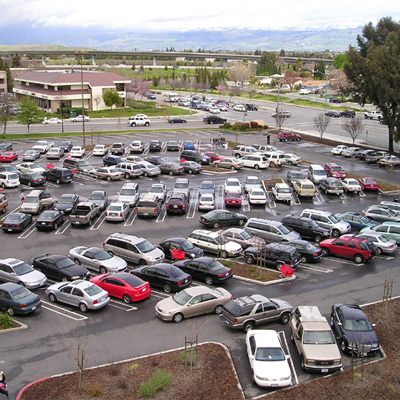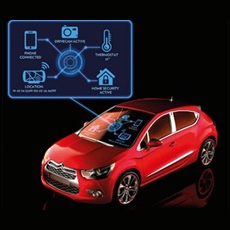Articles
Advancements in Automotive Safety: Understanding ADAS and Collision Avoidance Systems

Introduction:
In the ever-changing landscape of automotive technology, the focal point on safety has risen to prominence for manufacturers and consumers alike. The integration of Advanced Driver Assistance Systems (ADAS) and Collision Avoidance Systems marks a substantial advancement in ensuring the safety of drivers, passengers, and pedestrians. This article delves into the world of automotive safety innovations, simplifying the complexities of ADAS and Collision Avoidance Systems for a more accessible understanding.
Understanding Advanced Driver Assistance Systems (ADAS):
ADAS is a comprehensive term that encompasses a variety of technologies designed to enhance vehicle safety by assisting the driver in the driving process. These systems leverage sensors, cameras, radar, and other advanced technologies to provide real-time information and support. Let's explore some key components of ADAS:
1. Adaptive Cruise Control (ACC):
Traditional cruise control maintains a set speed, requiring the driver to manually adjust for changing traffic conditions. ACC takes it a step further by automatically adjusting the vehicle's speed to maintain a safe following distance from the vehicle ahead.
2. Lane Departure Warning (LDW) and Lane-Keeping Assist (LKA):
LDW alerts the driver if the vehicle unintentionally drifts out of its lane and LKA goes beyond warnings, actively steering the vehicle back into its lane if necessary.
3. Automatic Emergency Braking (AEB):
Automatic Emergency Braking (AEB) employs sensors to identify an impending collision and autonomously engages the brakes in case the driver fails to respond promptly. This action aims to mitigate the impact or, in some cases, entirely avert the collision.
4. Blind Spot Detection (BSD):
BSD monitors the vehicle's blind spots and provides warnings if there's a vehicle in the adjacent lane, helping prevent dangerous lane-change collisions.
5. Cross Traffic Alert (CTA):
CTA warns drivers of approaching traffic from the side, typically when backing out of parking spaces.
Collision Avoidance Systems:
While ADAS focuses on assisting the driver, Collision Avoidance Systems take a more proactive approach by actively intervening to prevent collisions. These systems often work in tandem with ADAS technologies. Let's explore some key features:
1. Forward Collision Warning (FCW):
FCW uses sensors to detect an impending collision with a vehicle or obstacle in the vehicle's path, providing the driver with an early warning.
2. Pedestrian Detection:
This system identifies pedestrians in or near the vehicle's path and alerts the driver or automatically applies the brakes to avoid a collision.
3. Collision Mitigation Systems:
These systems intervene to minimize the impact of a collision. For instance, pre-tensioning seatbelts, adjusting the suspension or preparing the brakes for maximum efficiency.
4. Intersection Collision Warning:
Alerts the driver to potential collisions at intersections, where many accidents occur, by monitoring cross-traffic movements.
The Benefits of ADAS and Collision Avoidance Systems:
1. Reduced Accidents and Fatalities:
Through delivering immediate support and preemptive intervention, these systems markedly diminish the likelihood of accidents and the resulting injuries or fatalities.
2. Improved Driver Confidence:
ADAS and Collision Avoidance Systems enhance driver confidence by providing a safety net for potential errors or lapses in attention.
3. Enhanced Traffic Flow:
ACC contributes to smoother traffic flow by maintaining optimal following distances, reducing abrupt stops and starts.
4. Insurance Benefits:
Some insurance providers offer discounts for vehicles equipped with advanced safety features, encouraging the adoption of these technologies.
Challenges and Considerations:
While ADAS and Collision Avoidance Systems offer tremendous benefits, there are challenges to widespread adoption:
1. Cost:
The integration of these advanced technologies can increase the overall cost of vehicles, potentially limiting access for some consumers.
2. Maintenance and Repairs:
Repairing and maintaining these systems can be costly, requiring specialized knowledge and equipment.
3. User Education:
Ensuring that drivers understand how to use and trust these systems is crucial for their effective implementation.
Conclusion:
As automotive safety technology continues to advance, the integration of ADAS and Collision Avoidance Systems represents a significant stride toward a safer driving experience. While challenges exist, the potential to reduce accidents, injuries, and fatalities makes these innovations a crucial aspect of the future of transportation. As consumers, manufacturers, and regulators work together, we can look forward to a road network where safety is not just a priority but an integrated and automated reality.




